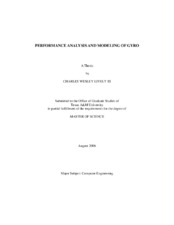| dc.description.abstract | Efficient execution of scientific applications requires an understanding of how system features
impact the performance of the application. Performance models provide significant insight into
the performance relationships between an application and the system used for execution. In
particular, models can be used to predict the relative performance of different systems used to
execute an application. Recently, a significant effort has been devoted to gaining a more detailed
understanding of the performance characteristics of a fusion reaction application, GYRO.
GYRO is a plasma-physics application used to gain a better understanding of the interaction of
ions and electrons in fusion reactions. In this thesis, we use the well-known Prophesy system to
analyze and model the performance of GYRO across various supercomputer platforms. Using
processor partitioning, we determine that utilizing the smallest number of processors per node is
the most effective processor configuration for executing the application. Further, we explore
trends in kernel coupling values across platforms to understand how kernels of GYRO interact.
In this work, experiments are conducted on the supercomputers Seaborg and Jacquard at
the DOE National Energy Research Scientific Computing Center and
the supercomputers DataStar P655 and P690 at the San Diego Supercomputing
Center. Across all four platforms, our results show that utilizing one processor per node (ppn)
yields better performance than full or half ppn usage. Our experimental results also show that
using kernel coupling to model and predict the performance of GYRO is more accurate than
summation. On average, kernel coupling provides for prediction estimates that have less than a
7% error. The performance relationship between kernel coupling values and the sharing of
information throughout the GYRO application is explored by understanding the global
communication within the application and data locality. | en |


